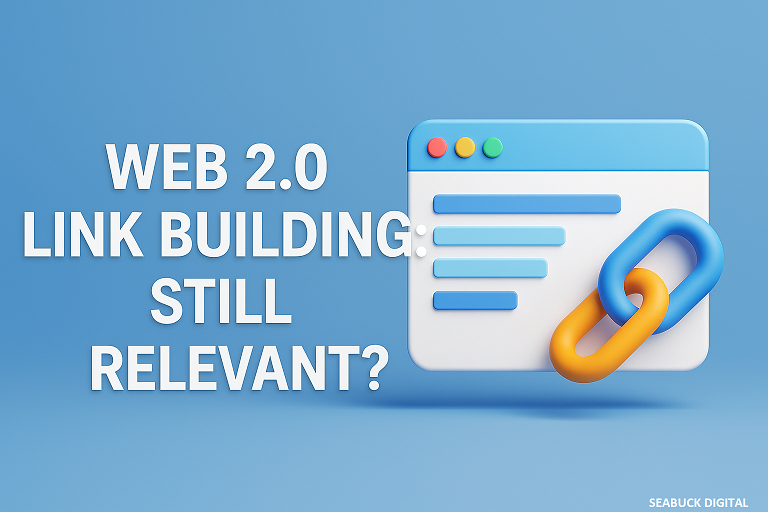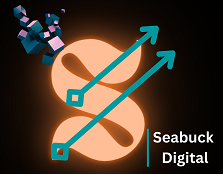
Introduction to Web 2.0 Link Building
What is Web 2.0 Link Building?
Web 2.0 link building is the practice of creating backlinks by publishing content on free blogging and publishing platforms like WordPress, Blogger, and Medium. These platforms allow users to generate their own content, complete with outbound links to their own websites.
Quick History of Web 2.0 Platforms
Back in the early 2010s, SEO professionals swarmed to these sites. They were easy to use, had solid domain authority, and didn’t require permission to post. At that time, getting a backlink from WordPress.com felt like winning the SEO lottery.
How Web 2.0 Links Work in SEO
The idea is simple: you write a blog post or article, embed a link to your website with a relevant anchor, and hope that Google sees it as a credible endorsement. It’s a way to boost your backlink profile—if done right.
Benefits of Web 2.0 Link Building
Full Content Control
Unlike guest posts or forums, you’re the boss here. You control every word, link, image, and keyword placement. That means full optimization is in your hands.
High Domain Authority Platforms
Web 2.0 sites usually have high DA, which helps pass more link equity. Even though the subdomain you create starts from zero, it still gains authority faster due to the root domain’s strength.
Diversified Link Profile
A healthy backlink profile is a diverse one. Web 2.0 links can act as buffers, supporting your main links with a variety of anchor texts and domains.
Free and Scalable Strategy
Don’t want to spend on links? Web 2.0s are completely free. You can create 10 or 100, as long as you do it with care and purpose.
Challenges of Web 2.0 Link Building
Spam and Low-Quality Content Issues
Many SEOs abuse Web 2.0s with spun or irrelevant content, which leads to devalued links. If you don’t put in real effort, it won’t pay off.
Time-Consuming to Manage
Creating dozens of blogs, updating them regularly, and keeping them indexed is no joke. It’s like raising digital bonsai trees—slow and demanding.
Risk of Deindexing or Removal
Platforms like Blogger or Tumblr can take down your page without notice. If your content looks spammy or violates terms, say goodbye to your backlinks.
Is Web 2.0 Link Building Still Effective in 2025?
Google’s Stance on Web 2.0 Links
Google treats Web 2.0 links like any other link—based on content quality and relevance. If it looks like manipulation, it’s ignored or penalized.
Relevance in E-E-A-T SEO Era
Experience, Expertise, Authoritativeness, and Trustworthiness (E-E-A-T) matter more than ever. If your Web 2.0 content shows real knowledge, it can still play a role in SEO strategy.
Modern Usage in Tiered Link Building
Today, smart SEOs use Web 2.0s to power up other backlinks (tier 2 link building). For example, linking to a guest post or HARO placement to increase its strength.
Best Practices for Using Web 2.0 in 2025
Focus on Quality Over Quantity
One rich, well-crafted Web 2.0 blog is better than 10 junk ones. Invest time in writing something valuable.
Build Out Complete, Valuable Blogs
Don’t stop at one post. Add an About page, contact info, and multiple articles. Make it look like a real site, not a link dump.
Use Relevant Anchors and Natural Linking
No keyword stuffing. Use branded anchors, naked URLs, or contextual anchor text that fits naturally into your content.
Avoid Duplicate or Thin Content
Google’s Panda and Helpful Content Updates target low-value pages. Every article you publish should be unique and informative.
List of Top Web 2.0 Sites to Use in 2025
WordPress.com
Still one of the most respected platforms. Easy to use, clean interface, and excellent SEO capabilities.
Medium
Loved by writers and readers alike. Great for authority, though more selective about outbound links.
Blogger
An oldie but goodie. Owned by Google, which might give it an edge for indexing.
Wix
Ideal for building mini-sites or microsites. Offers design flexibility if you want to create a Web 2.0 that looks sharp.
Tumblr
Short-form content, GIFs, and social engagement? Sure. But also good for casual linking and tier 2 strategies.
How to Create a Web 2.0 Link the Right Way
Step-by-Step Setup Process
- Pick your Web 2.0 platform.
- Register an account and verify your email.
- Create a branded subdomain (e.g., mybrand.wordpress.com).
- Write your first article with relevant keywords and at least 500–700 words.
- Insert your backlink naturally.
On-Page Optimization Tips
- Use H1 to H3 headings
- Add images with alt text
- Interlink related articles
- Add meta descriptions if possible
Internal and External Linking Structure
Link to authority sites like Wikipedia or niche blogs, and create internal links between your posts to build site structure.
Comparing Web 2.0 With Other Link Building Strategies
Guest Posting vs Web 2.0
Guest posts carry more weight but require outreach. Web 2.0s give you instant publishing control.
Forum Backlinks vs Web 2.0
Forums are good for traffic and niche exposure. But for raw SEO value, a strong Web 2.0 blog may perform better.
Niche Edits vs Web 2.0
Niche edits are powerful but paid and riskier. Web 2.0s are safer and sustainable when done right.
Future of Web 2.0 Link Building
AI and Automation in Web 2.0 Creation
With AI tools like ChatGPT and Jasper, creating high-quality Web 2.0 content has never been easier. But don’t fully automate—add a human touch.
Will Google Devalue These Links Entirely?
It’s possible—but unlikely. As long as content remains high-quality and contextually linked, Web 2.0s will retain some SEO value.
Conclusion
Web 2.0 link building isn’t dead. It’s evolved. While it may no longer be the holy grail of backlinks, when used strategically in 2025, it still plays a valuable role—especially for tiered link building, diversifying your profile, and supporting authority links. The trick is treating your Web 2.0s like real websites. Think quality, not shortcuts. If you’re willing to do that, this old-school tactic can still deliver modern SEO results.
FAQs
Can Web 2.0 backlinks hurt my rankings?
Only if you overdo it with spammy, low-quality content. Keep it clean, relevant, and helpful.
How many Web 2.0s should I build?
Focus on building 5–10 strong ones rather than 50 weak ones. Quality over quantity.
Do Web 2.0s pass link juice?
Yes, if they’re well-crafted, indexed, and hosted on high-authority domains.
Should I use spun content on Web 2.0s?
Absolutely not. Spun content is a shortcut to getting deindexed and penalized.
Are Web 2.0 links good for new websites?
Yes, they can help build a foundational backlink profile and improve indexing speed.
Read More:
Ultimate Guide to Link Building

